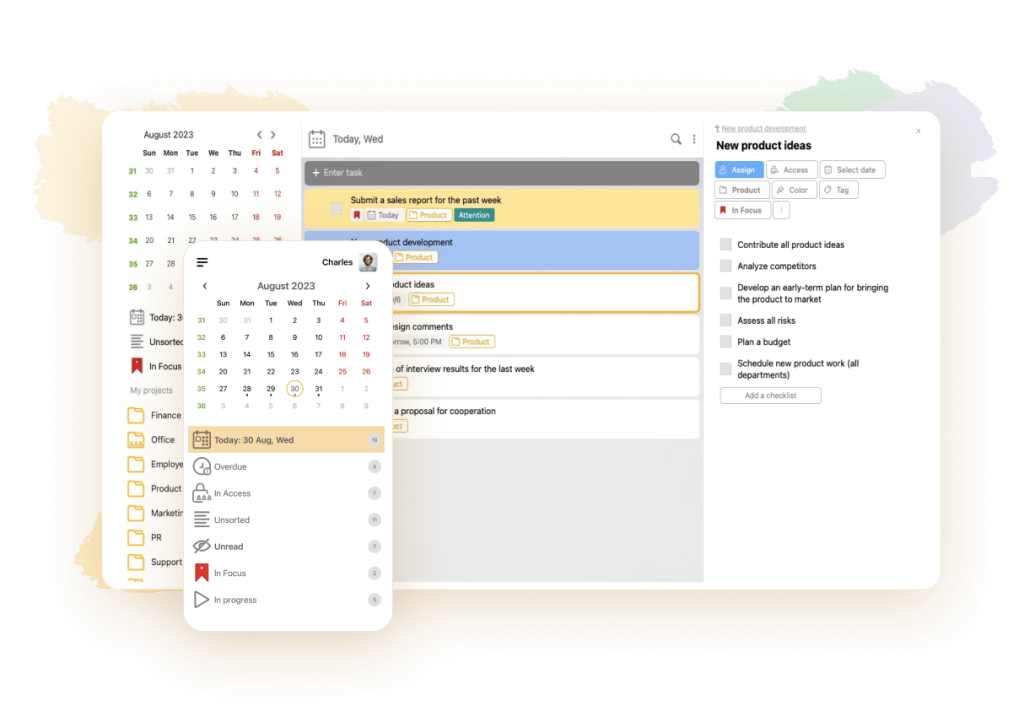Project management information systems

In 2023, any company, regardless of its field of activity and life cycle of existence, requires business processes. At the same time, they must be fine-tuned to ensure the firm’s survival in a competitive and flexible business environment. The same need, in turn, is the ability of the enterprise to respond rapidly to the changes occurring in the surrounding world.
The company’s strategic goals have a unified foundation and common concepts that ensure targeted forward movement. And project management information systems are a tool to achieve them. They take into account project risks, optimize the use of resources, monitor the execution of strategic plans, analyze real indicators and make adjustments to the progress of work.
It turns out that a project management system is a key component of an organization’s management system that leads to the achievement of the company’s strategic goals. What is the program, how is it implemented and how to choose it correctly? Let’s explore these questions and review the best automated programs in today’s article.

What are project management systems
First, let’s understand what project management is. Project management information system (PMIS) is an organizational and technological complex of methodological, technical, software and information tools.
This tool is usually aimed at supporting and improving the efficiency of functional planning and project management processes based on specialized software. It should necessarily be recorded and conducted on the basis of common management processes.
Objectives of the management system
Such project management systems have been created specifically for:
- growth of the enterprise personnel performance during the project work;
- improving the quality of project management by the management team;
- multiplying the productivity of the organization’s project portfolio management.
The management systems and subsystems help to accomplish more projects within the specified time frame and at the same time limited to less budgeting, incur minimal costs.
IPMS tasks
The above goals are achieved through certain objectives of control systems. Let us point out the main ones:
- Providing the project activity manager with tools for project planning and monitoring of project implementation.
- Providing all team members involved in project activities with understandable tools required to accomplish tasks.
- Provide supervisory tool to department or division manager for quality allocation and utilization of staff on project and non-project assignments.
- Providing data to the manager on decision making on assigning certain employees to the next projects, the possibility of redistributing the level of workload.
- Providing a suitable tool for the project director to automate the routine and establish end-to-end monitoring of the status of the portfolio of projects under implementation, the ability to track the quality of work of managers.
- Provide a unitary dashboard to monitor all projects to the plant manager to enable quick process intervention, deviation analytics or decision making.
- Ability to view the alignment of the portfolio of projects with the company’s strategy to the company’s shareholders.
The main tasks of the project management information system allow to act more efficiently, as well as to fulfill the project management processes of any company, depending on its peculiarities, structure and specifics. At the same time, each participant of the process has the opportunity to observe and monitor.
Types of control systems
In most cases, the classification of project management systems comes down to dividing popular programs into local, client-server and web-based. Some have both boxed and cloud-based versions. Payment is made either on a one-time basis or by monthly subscription per user.
Small teams, small businesses are recommended to purchase not too expensive or conditionally free software located in the developer’s cloud. Such platforms often have the functionality of task managers, maintain client bases and are successfully engaged in projects.
Medium, large and very large enterprises are better suited to boxed models with online project management systems. Their functionality is usually broader, customizable, provides the company with basic needs and is easily adapted to the activities of any business area.
Areas of application of the project management system
IPMS have been successfully used in several industries. They achieve the greatest results in areas such as development, construction and IT, engineering and consulting services, industry and new product development, and internal development projects.
However, in other business areas as well, most dedicated project management systems are easily adapted to industry specifics with advanced functionality and flexible customization. A PMS (integrated project management system) can be essential in the public sector, the digital economy and the first phase of project development.
In the future it can be implemented in the field of construction, providing comprehensive customer support and effective interaction between project participants. It can also be implemented in the field of data storage and space management, where a comprehensive project management system is required for effective organization of work and interaction between project participants.
Project Management is an essential component of effective business management, and implementing a project management system can greatly simplify the process.
Application of project management systems: what are the benefits
Business owners may have a legitimate question: why does a company need a project management information system? In fact, it has several advantages at once:
- reduces the number of projects that are not in line with the company’s strategic line;
- Increases accountability and efficiency in the utilization of firm resources;
- reduces budget overruns;
- reduces the failure rate of project activities;
- minimizes the time costs for project offices and project managers of developed projects.
And remember that a business needs only effective tools that can bring it benefits: financial, resource or reputational. There is no point in worrying about software that only complicates the company’s work or that the company is not going to use.
Implementation of the IPMS
Qualitative implementation of domestic project management system in the practical activities of the enterprise is a large and autonomous organizational project. It must be managed according to the requirements of the rules of project management and change management in the firm.
It is desirable to carry out such a project according to an established standard, consistently following the following steps:
- Competently initiate project creation by establishing a project manager, assembling a working group and preparing an internal implementation plan.
- Further, incorporate a single management tool (with automation, a single repository, a common working environment for discussions) within the boundaries of the pilot project, while simplifying rather than complicating management processes.
- In the near future to get initial results, allowing the management of the enterprise to make sure of the correctness of the chosen direction, and the team to be inspired and get an additional charge of motivation.
A simple way to accomplish the steps correctly is to get a project online portal that allows project participants to act quickly, in a convenient format, in a compliant manner, covering the fundamental information needs of the firm as project activities progress.
Project management systems: how to choose the right one
Thus, the choice of the right automated system is the main task of many companies, on which the further realization of the development depends. The decision should not be made thoughtlessly, but based on the specific characteristics of the software, its methodologies.
The platform should have a simple and intuitive interface to immediately launch the main business processes in the company, be easy to implement, and not require lengthy user training. In this case, the program will not cause resistance among employees, but will be accepted by employees with gratitude for simplifying network processes and freeing up calendar time.
In addition, the functionality of the platform should be flexible and easy to customize, so that the service can be put to work immediately, rather than having to go through the agony of programming and design. The top tools should include certain templates that can automate the fundamental processes of the company. At the same time, the program should be able to be further adjusted as the company develops.
LeaderTask – project management information system

The modern LeaderTask platform is a corporate project management tool that can be easily and quickly adapted to your principles and processes. With the program, it becomes possible to plan projects and track tasks, use kanban boards, delegate assignments, maintain a client base, use analysis and monitoring, and create workflows.
The manager no longer has to adjust business processes to the limitations of the used project management tool. On the contrary, LeaderTask will adapt to the needs of management and company technology. It will do everything the way the team needs it.
Service Functions:
- CRM system with an extended customer base;
- kanban boards, visualization of methods;
- reminders, smart notifications;
- tasks with tree function and subtasks, projects, checklists, to-do lists with labels and color design;
- a day planner, a schedule, a calendar;
- attaching attachments and files (images, videos, links, texts, etc.);
- intelligent search, filtering, sorting;
- customization of the setting;
- individual and shared access;
- integration with e-mail, third-party services;
- synchronization with any mobile devices, devices, widgets in browsers.
Rates:
- Free – for beginners;
- Premium – for professionals;
- Business – for teams.
Automated project management systems combine tools to accomplish tasks into a cohesive whole. They manage distributed infrastructure, monitor the status of elements and systems, alert you to likely problems, plan and help you keep track of your team.
Apply project management systems in your professional practice to simplify business processes, increase productivity, and increase your company’s income. Good luck!



